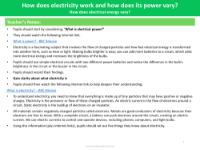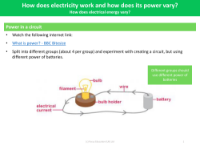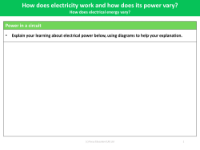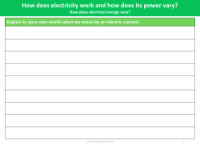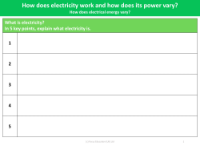How does electrical energy vary? - Presentation

Science Resource Description
The National Curriculum for Science in Year 6 outlines an educational journey exploring the principles of electrical energy. Pupils are expected to understand how the brightness of a lamp or the volume of a buzzer can be influenced by the number and voltage of cells within a circuit. They are also taught to identify and explain variations in how components like bulbs and buzzers function, and to represent simple circuits using recognised symbols in diagrams. This curriculum segment delves into the substantive knowledge of why certain components in a circuit work or do not work, and how to draw circuit diagrams accurately. Understanding the direct correlation between the number and voltage of cells and the resultant brightness or volume is a key learning outcome.
To facilitate this learning, pupils engage in various activities that include fair testing and pattern seeking, such as observing the effect of increasing voltage on a bulb's brightness and comparing the brightness of bulbs in series and parallel circuits. They learn to construct simple series circuits and apply their knowledge to create simple games. Vocabulary is built around terms like 'circuit', 'conductor', and 'insulator', and pupils gain a deeper understanding of common appliances that use electricity, how to identify parts of a circuit, and the role of switches. Prior knowledge from Year 4 is revisited, and pupils are encouraged to reflect on their personal experiences with electricity. The learning process is designed to be progressive, ensuring that pupils not only acquire knowledge but also understand its practical application in everyday life.
